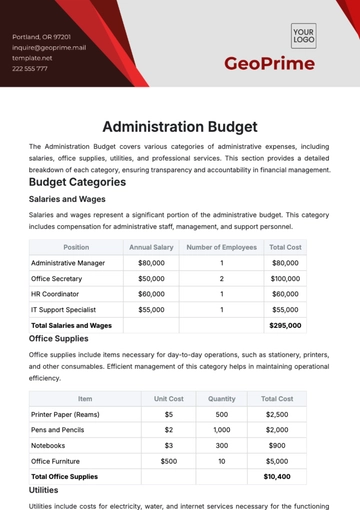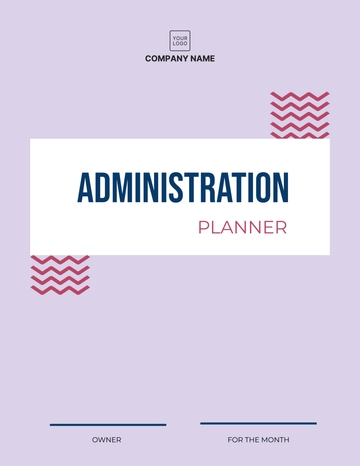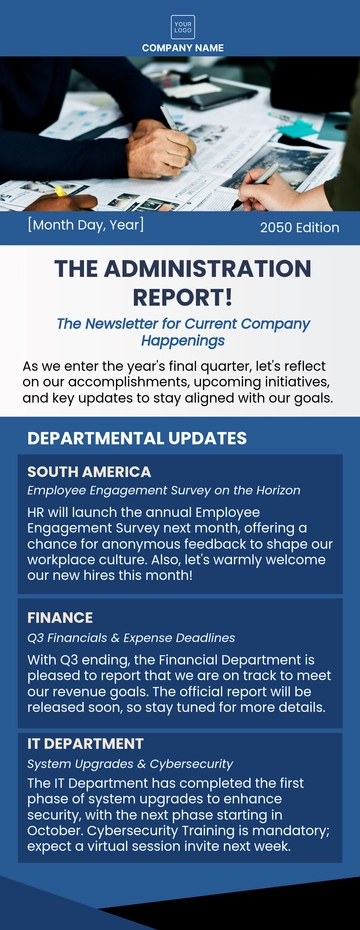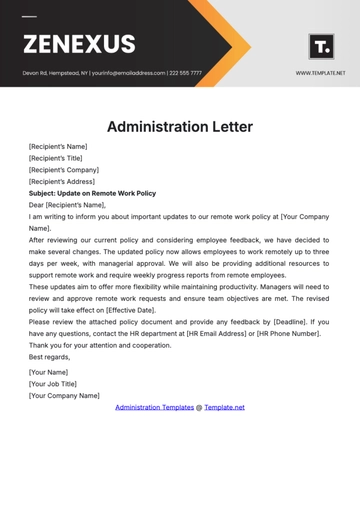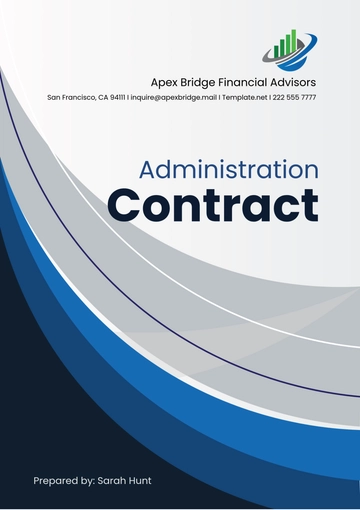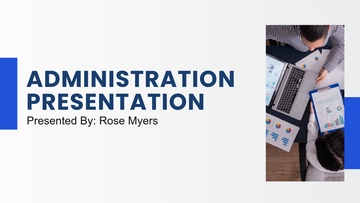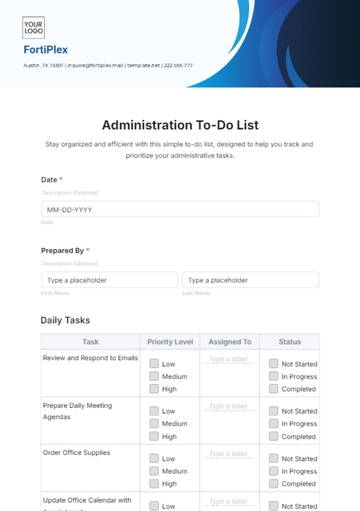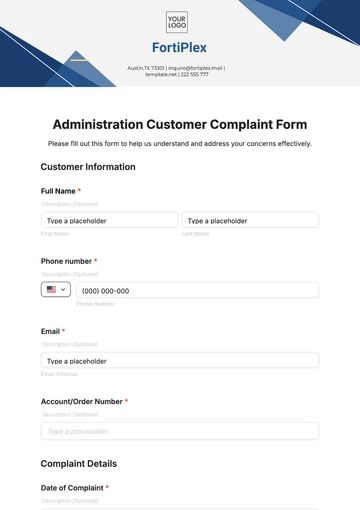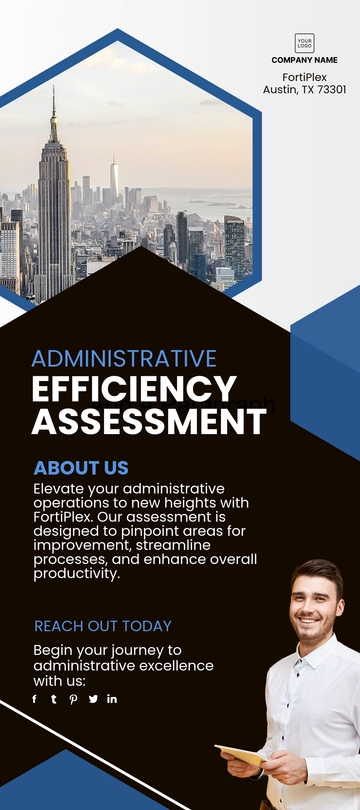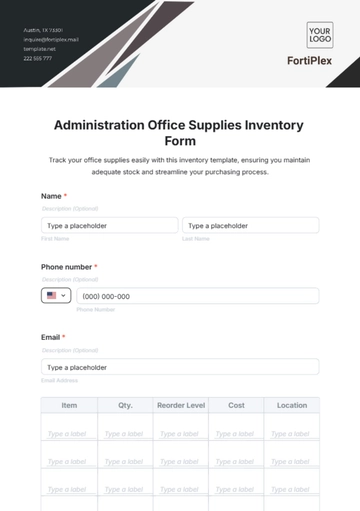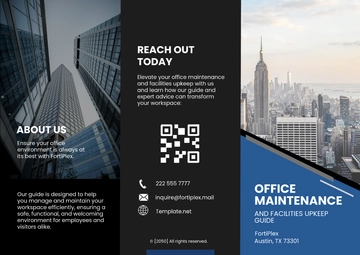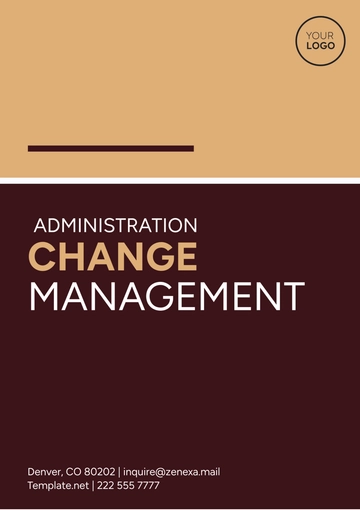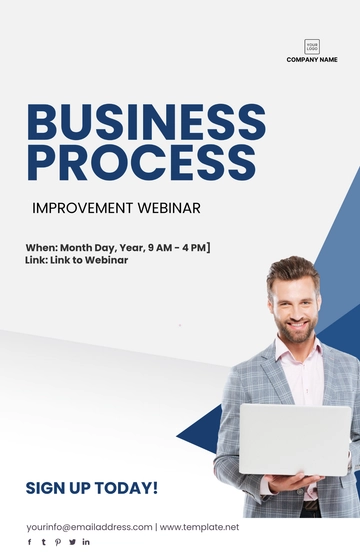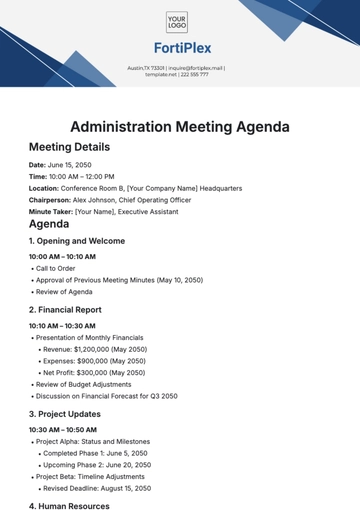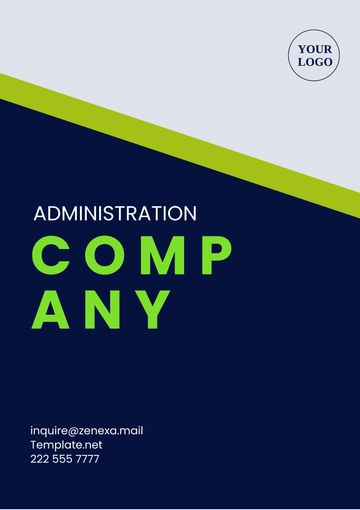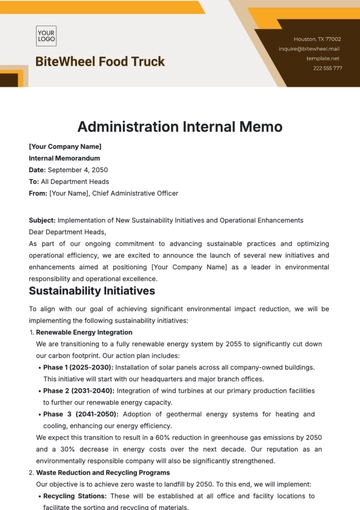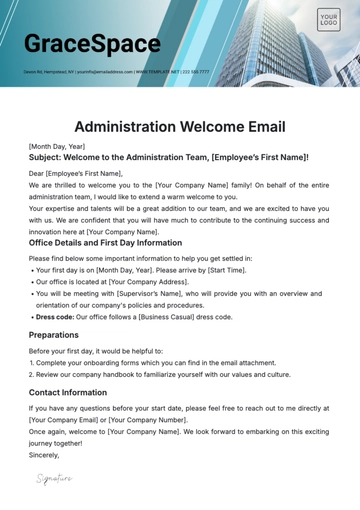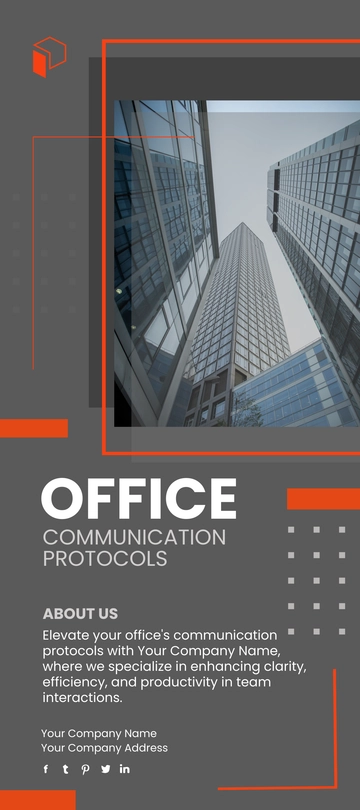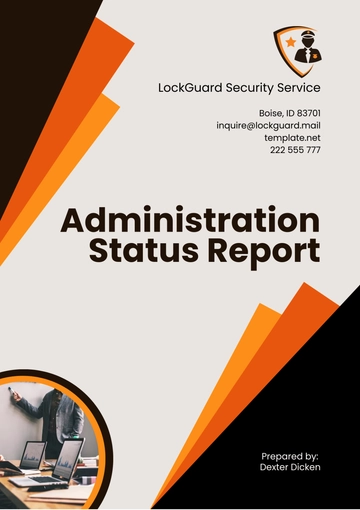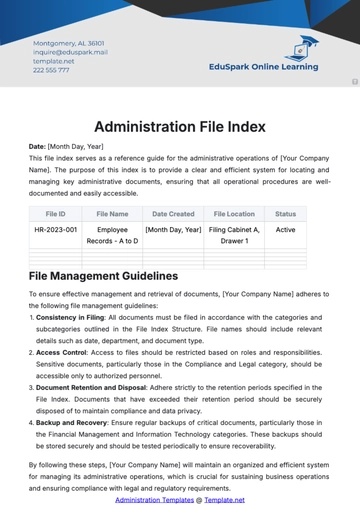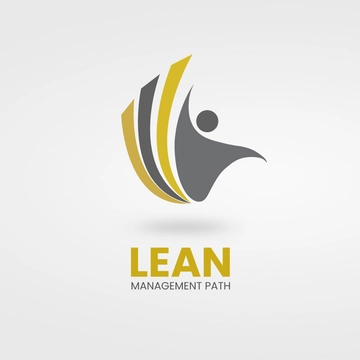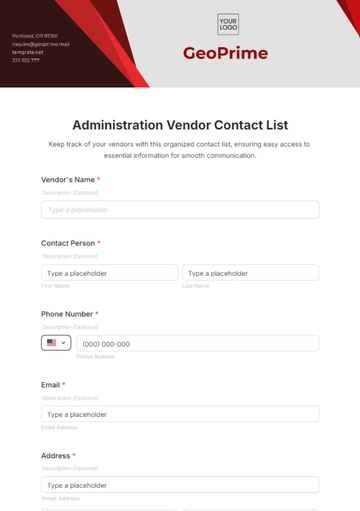Free Administration Corporate Compliance Case Study
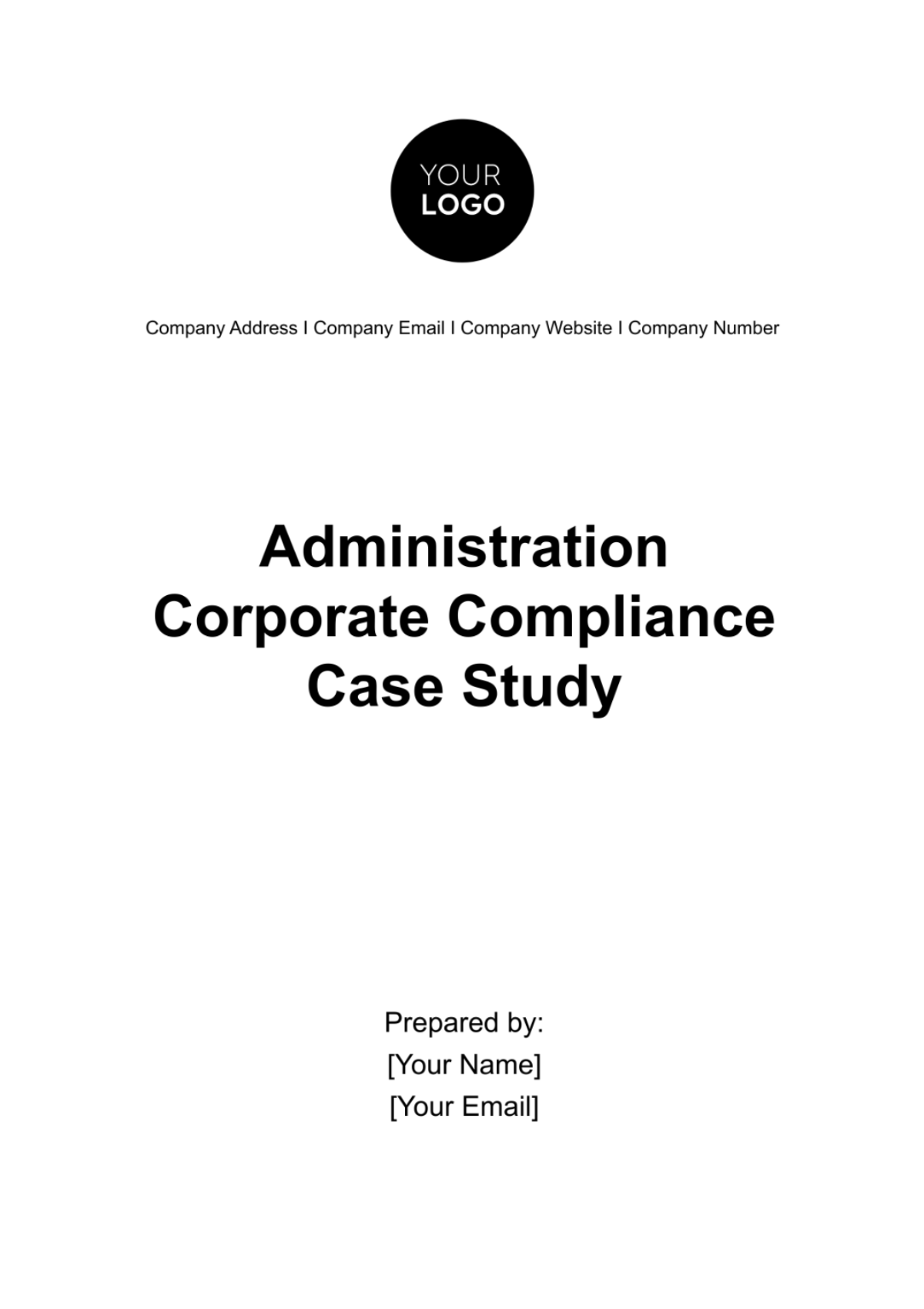
I. Executive Summary
This case study presents a detailed examination of the administration corporate compliance of [Your Company Name]. It includes an in-depth analysis of the legal, ethical, and regulatory aspects of compliance. It also identifies key issues and challenges in the company’s corporate compliance, such as outdated compliance policies, lack of awareness among employees, and inadequate compliance training. It also highlights the challenges of keeping up with the changing legal and regulatory landscape, fostering a culture of compliance, and ensuring compliance across all levels of the company.
Based on these findings, the study provides a set of actionable recommendations for enhancing corporate compliance at [Your Company Name]. These include updating compliance policies, enhancing compliance training, and fostering a culture of compliance. By implementing these recommendations, [Your Company Name] can enhance its corporate compliance, mitigate potential risks, and contribute to its overall success and reputation.
II. Introduction
A. Scope
The scope of this study covers all areas of corporate compliance, including legal, ethical, and regulatory aspects. Here are the specifics:
Legal Aspects: The study examines the company’s adherence to laws and regulations relevant to its industry and operations.
Ethical Aspects: It also looks into the company’s commitment to ethical behavior and integrity in its dealings with stakeholders.
Regulatory Aspects: Finally, the study explores the company’s compliance with industry-specific regulations and standards.
B. Objectives
The objectives of this study are threefold:
Assess the Current State: The first objective is to assess the current state of corporate compliance at [Your Company Name]. This includes evaluating the company’s compliance policies and procedures, as well as its adherence to legal, ethical, and regulatory standards.
Identify Issues and Challenges: The second objective is to identify any issues and challenges that [Your Company Name] may be facing in terms of corporate compliance. This could include gaps in the company’s compliance policies, lack of awareness among employees, or challenges in keeping up with changing regulations.
Propose Recommendations: The final objective is to propose actionable recommendations that [Your Company Name] can implement to enhance its corporate compliance. These recommendations will be based on the findings of the study and aligned with industry best practices.
III. Methodology
Presented below are the methods used to evaluate the company’s compliance practices:
A. Data Collection
The study uses a combination of primary and secondary data. Here are the specifics:
Primary Data: This refers to data collected directly from the source. In this case, it involves conducting interviews and surveys with key personnel within the company who are involved in compliance practices. This firsthand information provides valuable insights into the internal compliance landscape of the company.
Secondary Data: This refers to data obtained from existing sources. For this study, it includes the company’s annual reports, compliance policy documents, and relevant industry studies. This data provides a broader context for understanding the company’s compliance practices.
Data Validation: To ensure the accuracy and reliability of the data, all collected information is validated through cross-referencing with multiple sources. This rigorous validation process helps to ensure that the study’s findings are based on accurate and trustworthy data.
B. Data Analysis
The collected data is analyzed using various statistical and analytical tools to draw meaningful insights. Here are the details:
Descriptive Analysis: The first step in the data analysis process is descriptive analysis. This involves summarizing the data to provide a clear and understandable depiction of the company’s compliance practices.
Comparative Analysis: The study also conducts a comparative analysis, comparing the company’s compliance practices with industry standards and best practices. This helps to identify any gaps or areas for improvement.
Trend Analysis: Trend analysis is used to identify patterns or trends in the company’s compliance practices over time. This can provide insights into the effectiveness of the company’s compliance policies and procedures.
Predictive Analysis: Finally, predictive analysis is used to forecast potential future compliance issues based on current trends and patterns. This can help the company to proactively address potential compliance risks.
Interpretation: The results of the data analysis are then interpreted in the context of the company’s business operations and strategic objectives. This helps to ensure that the study’s findings are relevant and actionable for the company.
C. Evaluation Criteria
The study uses a set of criteria to evaluate the company’s compliance practices. These criteria are based on industry best practices and regulatory standards. Here are the specifics:
Compliance with Laws and Regulations: The first criterion is the company’s adherence to relevant laws and regulations. This includes both national and international laws, as well as industry-specific regulations.
Ethical Conduct: The study also evaluates the company’s commitment to ethical conduct. This includes the company’s ethical guidelines, its mechanisms for enforcing these guidelines, and its handling of any ethical violations.
Training and Awareness: Another important criterion is the company’s efforts to train its employees on compliance issues and raise awareness about the importance of compliance.
Monitoring and Enforcement: The study also assesses the company’s mechanisms for monitoring compliance and enforcing its compliance policies.
IV. State of Corporate Compliance and Analysis
Here, we present the results and the detailed analysis of the current state of corporate compliance at [Your Company Name].
A. Legal Compliance
The following table presents the status of legal compliance at the company:
Legal Compliance Item | Compliance Status |
|---|---|
Compliance with Employment Laws | Fully Compliant |
Adherence to Environmental Regulations | |
Observance of Anti-Corruption Laws |
The compliance status for Compliance with Employment Laws is indicated as Fully Compliant. This suggests that the company has successfully met all legal requirements related to employment. In the context of legal compliance, achieving full compliance is a significant accomplishment. It demonstrates the company’s commitment to operating within the bounds of the law, which is crucial for maintaining its reputation and avoiding legal issues. Moreover, full compliance with employment laws also signifies the company’s dedication to ensuring a fair and equitable workplace. This can contribute to employee satisfaction and retention, which are key factors in the company’s success.
B. Ethical Compliance
The following table presents the status of ethical compliance at the company:
Ethical Compliance Item | Compliance Status |
|---|---|
Adherence to Code of Conduct | Partially Compliant |
Fair Treatment of Employees | |
Responsible Sourcing | |
Transparency in Business Practices | |
Protection of Customer Privacy |
The status for Adherence to Code of Conduct is indicated as Partially Compliant. This suggests that while the company has made some progress in adhering to its code of conduct, there are still areas that need improvement.
Partial compliance with the code of conduct can have several implications. On one hand, it shows that the company recognizes the importance of ethical conduct and has taken steps to promote it. On the other hand, it also indicates that there are gaps in the company’s ethical practices that need to be addressed.
Addressing these gaps is crucial not only for achieving full compliance but also for fostering a culture of integrity within the company. A strong culture of integrity can enhance the company’s reputation, build trust with stakeholders, and contribute to long-term success.
The importance of ethical compliance extends beyond just adhering to a code of conduct. It reflects the company’s values and shapes its corporate culture. By striving for ethical excellence, the company can set a positive example for its employees, inspire confidence among its stakeholders, and differentiate itself in the marketplace.
C. Regulatory Compliance
The following table presents the status of regulatory compliance at the company:
Regulatory Compliance Item | Compliance Status |
|---|---|
Compliance with Industry-Specific Regulations | Fully Compliant |
Adherence to Data Protection Regulations | |
Compliance with Health and Safety Regulations | |
Observance of Financial Reporting Regulations |
The status for Compliance with Industry-Specific Regulations is indicated as Fully Compliant. This suggests that the company has successfully met all regulations specific to its industry. Full compliance with industry-specific regulations is a significant achievement. It demonstrates the company’s commitment to maintaining high standards in its operations and services. This not only helps in building trust with stakeholders but also contributes to a positive company reputation.
However, achieving full compliance is not the end of the journey. It’s important for the company to continuously monitor changes in regulations and update its practices accordingly. This proactive approach can help the company stay ahead of regulatory changes and ensure ongoing compliance.
Regulatory compliance is a critical aspect of corporate compliance. It ensures that the company operates in accordance with the rules and standards set by regulatory bodies. By maintaining regulatory compliance, the company can avoid penalties, protect its reputation, and enhance its credibility in the marketplace. This, in turn, can contribute to the company’s long-term success.
V. Issues and Challenges
These issues and challenges are derived from the analysis conducted:
A. Issues
The following are the main issues identified in the company’s corporate compliance:
Outdated Compliance Policies: One of the key issues is that some of the company’s compliance policies are outdated and do not reflect current legal and regulatory requirements. This could expose the company to compliance risks and potential penalties. It’s crucial for the company to regularly review and update its compliance policies to ensure they align with the latest laws and regulations.
Lack of Awareness Among Employees: Another issue is the lack of awareness among employees about the importance of compliance and their role in it. This could lead to unintentional violations of compliance policies. The company needs to invest in ongoing compliance training and communication to ensure all employees understand the importance of compliance and their responsibilities.
Inadequate Compliance Training: The company’s compliance training program is inadequate and does not effectively equip employees with the knowledge and skills they need to comply with relevant laws and regulations. An effective compliance training program should be comprehensive, engaging, and tailored to the specific needs of the company and its employees.
B. Challenges
The following are the main challenges that the company faces in improving its corporate compliance:
Changing Legal and Regulatory Landscape: The legal and regulatory landscape is constantly changing, and keeping up with these changes is a major challenge. The company needs to have a proactive approach to monitoring changes in laws and regulations and updating its compliance policies and procedures accordingly.
Creating a Culture of Compliance: Creating a culture of compliance within the company is another significant challenge. This involves not only implementing effective compliance policies and procedures but also ensuring that employees understand and adhere to them. It requires strong leadership, clear communication, and ongoing training.
Ensuring Compliance Across All Levels of the Company: Ensuring compliance across all levels of the company, from top management to frontline employees, is a complex and challenging task. It requires effective communication, ongoing training, and strong leadership.
Monitoring and Enforcement: Monitoring compliance and enforcing compliance policies is a resource-intensive task. It requires the company to invest in compliance management systems and personnel. The company needs to strike a balance between being thorough in its monitoring and enforcement efforts and being efficient in its use of resources.
Balancing Compliance and Business Objectives: Balancing the need for compliance with business objectives is a delicate task. While compliance is important, it should not hinder the company’s ability to innovate and grow. The company needs to find a way to integrate compliance into its business strategies and operations in a way that supports, rather than hinders, its business objectives.
VI. Recommendations
Based on the issues and challenges identified, presented below are actionable recommendations that [Your Company Name] can implement to enhance its corporate compliance:
A. Update Compliance Policies
The company’s compliance policies should be regularly reviewed and updated to ensure they reflect current legal and regulatory requirements. Here are the specifics:
Review Existing Policies: The first step is to review the existing compliance policies to identify any gaps or outdated information. This involves a thorough examination of all current policies and comparing them with the latest legal and regulatory requirements.
1.1. Gap Analysis: Conduct a gap analysis to identify areas where the company’s current policies fall short of legal and regulatory requirements.
1.2. Policy Review Team: Assemble a team of experts from relevant departments to conduct the policy review. This ensures that the review process is comprehensive and takes into account different perspectives within the company.
Update Policies: Based on the review, the policies should be updated to address the identified gaps and to align with the latest laws and regulations.
2.1. Policy Development: Develop new policies or revise existing ones to address the identified gaps. This should be done in consultation with legal experts to ensure that the policies are legally sound.
2.2. Stakeholder Input: Seek input from stakeholders, including employees, during the policy development process. This can help ensure that the policies are practical and take into account the realities of the company’s operations.
Communicate Updates: Once the policies are updated, it’s important to communicate these updates to all employees and provide them with the necessary training.
3.1. Communication Strategy: Develop a communication strategy to inform employees about the policy updates. This could include emails, meetings, and training sessions.
3.2. Training Program: Implement a training program to educate employees about the updated policies and their responsibilities under these policies.
B. Enhance Compliance Training
The company should enhance its compliance training program to ensure all employees are equipped with the knowledge and skills they need to comply with relevant laws and regulations. Here are the details:
Identify Training Needs: The first step is to identify the training needs of the employees. This could be done through surveys or feedback sessions.
1.1. Training Needs Assessment: Conduct a training needs assessment to identify gaps in employees’ knowledge and skills related to compliance.
1.2. Employee Feedback: Seek feedback from employees about the current training program and areas where they feel they need more training.
Develop Training Program: Based on the identified needs, a comprehensive training program should be developed. This program should cover all aspects of compliance and should be tailored to the specific needs of the employees.
2.1. Training Content: Develop training content that is relevant, engaging, and easy to understand. The content should cover all aspects of compliance, including legal, ethical, and regulatory aspects.
2.2. Training Methods: Use a variety of training methods, including lectures, workshops, and e-learning, to cater to different learning styles.
Implement Training Program: The training program should be implemented across all levels of the company. It should be mandatory for all employees and should be conducted on a regular basis.
3.1. Training Schedule: Develop a training schedule that ensures all employees receive training on a regular basis. This could be annually, biannually, or quarterly, depending on the company’s needs.
3.2. Training Records: Keep records of all training sessions, including who attended and their performance. This can help track the effectiveness of the training program and identify areas for improvement.
Evaluate Training Effectiveness: Finally, the effectiveness of the training program should be evaluated. This could be done through assessments or feedback from the employees.
4.1. Training Evaluation: Conduct evaluations after each training session to assess the effectiveness of the training. This could involve quizzes, surveys, or feedback forms.
4.2. Continuous Improvement: Use the evaluation results to continuously improve the training program. This could involve updating the training content, changing the training methods, or providing additional support to employees who are struggling with certain aspects of compliance.
C. Foster a Culture of Compliance
Creating a culture of compliance within the company is crucial for ensuring adherence to compliance policies and procedures. Here are the specifics:
Leadership Commitment: The company’s leadership should demonstrate a strong commitment to compliance. This could be done through regular communication about the importance of compliance and by setting a positive example.
1.1. Leadership Communication: Leaders should regularly communicate the importance of compliance to all employees. This could be done through emails, meetings, or town halls.
1.2. Leading by Example: Leaders should set a positive example by adhering to compliance policies in their own actions. This can help reinforce the importance of compliance to all employees.
Clear Communication: The company’s compliance policies and procedures should be clearly communicated to all employees. This includes providing clear guidelines on what is expected of them and what actions are considered non-compliant.
2.1. Policy Communication: All compliance policies and procedures should be clearly communicated to all employees. This could involve distributing policy documents, conducting training sessions, or posting information on the company intranet.
2.2. Open Dialogue: Encourage an open dialogue about compliance within the company. Employees should feel comfortable asking questions, raising concerns, or suggesting improvements related to compliance.
Reward Compliance: The company should reward compliance. This could be done through recognition programs or incentives.
3.1. Recognition Programs: Implement recognition programs to acknowledge employees who demonstrate a strong commitment to compliance. This could involve certificates, awards, or public recognition.
3.2. Incentives: Consider providing incentives, such as bonuses or promotions, to employees who consistently adhere to compliance policies.
Deal with Non-Compliance: Any instances of non-compliance should be dealt with promptly and appropriately. This sends a clear message that non-compliance will not be tolerated.
4.1. Reporting Mechanisms: Implement clear mechanisms for reporting non-compliance. This could involve a hotline, an online form, or a designated compliance officer.
4.2. Disciplinary Actions: Develop a clear policy for dealing with non-compliance. This should outline the potential disciplinary actions that could be taken, ranging from warnings to termination.
VII. Conclusion
In conclusion, this case study provides a comprehensive analysis of the administration corporate compliance of [Your Company Name]. It highlights the importance of corporate compliance and the need for continuous improvement in this area. The study also provides actionable recommendations that can help [Your Company Name] enhance its compliance practices and mitigate potential risks.
The company’s commitment to corporate compliance will not only ensure its legal and ethical standing but also contribute to its overall success and reputation. By addressing the identified issues and challenges, and by implementing the recommended actions, [Your Company Name] can foster a culture of compliance that aligns with its business objectives and strategic goals.
- 100% Customizable, free editor
- Access 1 Million+ Templates, photo’s & graphics
- Download or share as a template
- Click and replace photos, graphics, text, backgrounds
- Resize, crop, AI write & more
- Access advanced editor
Case study making is a breeze with Template.net’s Administration Corporate Compliance Case Study Template! This customizable and editable tool can be easily modified with our AI Editor Tool. It provides a comprehensive guide helping you achieve your compliance objectives and improve corporate governance! Never waste a minute! Edit right now!


